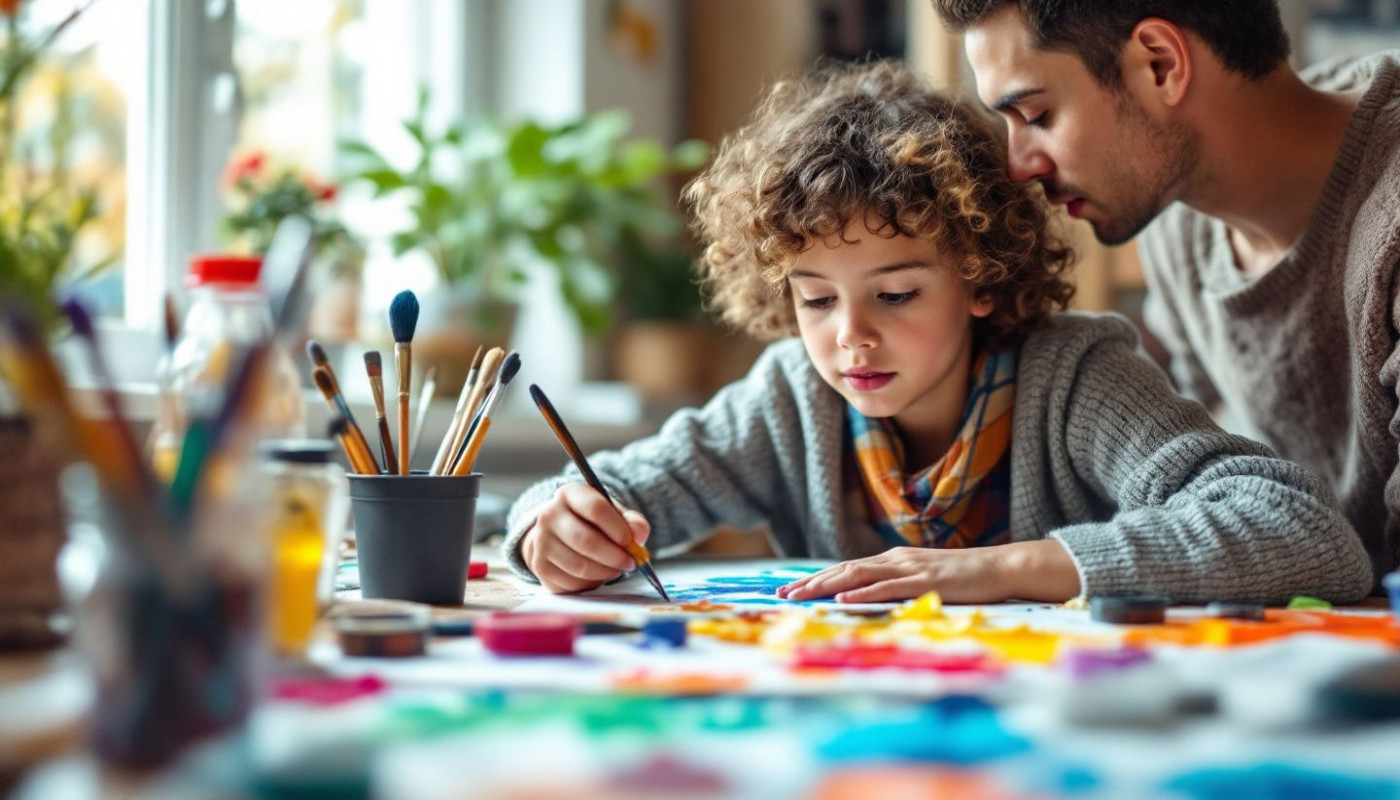Table of contents
Integrating art therapy into adolescent counseling practices opens up creative pathways for emotional expression and healing. As traditional approaches often face resistance from young clients, art-based interventions provide a unique channel for engagement and growth. Discover how these methods can transform therapeutic relationships and outcomes as the following sections delve into techniques, benefits, and practical strategies.
Understanding art therapy basics
Art therapy in counseling utilizes expressive arts modalities to foster communication, self-reflection, and emotional healing, particularly for adolescents who may struggle with verbal expression. Through a diverse range of therapeutic art methods—such as drawing, painting, sculpting, and collage—young clients engage in creative processes that encourage them to explore and convey complex feelings in a safe and structured environment. This approach aligns closely with adolescent therapy techniques, as it leverages developmental strengths like imagination, curiosity, and the desire for autonomy, which are prominent during the teenage years.
Creative expression benefits are well-documented, offering a pathway for self-discovery in teens who might otherwise feel overwhelmed by internal conflicts or social pressures. Engaging in art therapy in counseling allows adolescents to externalize emotions, recognize patterns in their feelings and behaviors, and build new coping strategies. These interventions not only support emotional processing but also contribute to the development of self-esteem and identity, providing a valuable supplement to traditional talk therapies. Expressive arts modalities thus serve as a powerful tool for unlocking insights and facilitating growth in adolescent clients.
Unique needs of adolescents
Adolescents face distinct developmental milestones as they navigate the transition from childhood to adulthood, which brings complex challenges in areas such as identity in adolescence, emotional expression, and social integration. During this period, many young people experience heightened emotional sensitivity and struggle to articulate their feelings due to ongoing brain development and evolving self-awareness. Traditional talk therapy sometimes falls short in adolescent counseling because teens may lack the vocabulary or willingness to openly discuss their inner struggles, leading to communication barriers. In response, nonverbal therapy tools like art therapy have emerged as valuable components of teen mental health support, offering a safe and expressive outlet for emotions that may be otherwise difficult to verbalize.
Art therapy encourages self-exploration and emotional regulation art techniques, helping adolescents externalize thoughts, process trauma, and build coping skills in a non-threatening way. By engaging in creative processes, teens can visually map out their feelings and experiences, which supports identity formation and fosters resilience. These interventions align closely with the unique psychological needs of this age group, promoting holistic well-being and bridging gaps left by traditional therapeutic methods. Art therapy, therefore, plays a pivotal role in modern adolescent counseling practices by addressing both verbal and nonverbal aspects of emotional development.
Implementing creative interventions
Integrating art therapy into adolescent counseling calls for creative counseling strategies that adapt the counseling session structure to the developmental needs of teens. A flexible approach, in which traditional talk therapy is complemented by art interventions for teens, allows for deeper engagement and helps build a strong therapeutic alliance. Sessions might begin with a brief verbal check-in, followed by a guided art activity using materials such as clay, paints, or collage. Careful selection of these materials can empower self-expression while also catering to individual comfort levels. Planning session flow to transition smoothly between art-making and discussion supports both emotional safety and creative exploration, encouraging adolescents to process complex feelings non-verbally before articulating them.
Creating a safe therapeutic space is fundamental when integrating art therapy, as adolescents benefit from clear boundaries, confidentiality, and respect for their unique creative process. The physical setup—whether in-person or virtual—should prioritize privacy and easy access to art supplies, reassuring teens that their work and words will be received without judgment. Incorporating consistent rituals, such as opening and closing discussions or displaying works in a dedicated area, further nurtures trust and predictability. For those seeking to learn about the adaptability of these methods across different age groups and counseling needs, it can be helpful to get more insight into psychotherapeutic approaches suited to all ages, reinforcing the value of creative interventions throughout the lifespan.
Measuring outcomes and progress
Evaluating therapy outcomes in adolescent counseling that incorporates art therapy requires a combination of qualitative and quantitative methods. Outcome measures such as standardized psychological assessments, symptom checklists, and self-report scales can quantitatively track changes in mood, behavior, and anxiety levels. At the same time, qualitative approaches—like analyzing the themes, symbolism, and complexity within client artwork—offer insight into emotional growth, self-expression, and interpersonal skills. Art therapy assessments should be administered at regular intervals, allowing therapists to compare baseline and ongoing results while systematically documenting therapeutic change. Progress in adolescent therapy can also be observed by noting shifts in engagement, communication, and creativity, with particular attention to how the creative process influences problem-solving and self-esteem. Measuring creativity impact involves not only the visual qualities of the artwork but also the adolescent’s narrative about their experience and reflection on personal growth.
Documenting therapeutic change is vital for demonstrating effectiveness and informing continued care. Clinical supervisors advise maintaining detailed session notes, progress logs, and portfolio collections of artwork to illustrate development over time. Treatment plans should be dynamically adjusted based on outcome measures, clinical impressions, and client feedback. Collaboration among counselors, clients, and, when appropriate, families, ensures that interventions remain relevant and responsive. Regular review of art therapy assessments supports accountability and provides a clear structure for modifying therapeutic goals, thereby optimizing progress in adolescent therapy and reinforcing the value of integrating creative modalities in treatment approaches.
Ethical considerations and training
Integrating art therapy within adolescent counseling requires careful attention to ethical art therapy principles, with an emphasis on adolescent counseling ethics. Therapists must obtain informed consent from both adolescents and their guardians, ensuring that clients fully understand the nature, benefits, and responsibilities associated with art-based interventions. Confidentiality in therapy is paramount, particularly as creative expression can reveal sensitive personal information; therapists should clearly communicate the limits of confidentiality and securely store artistic materials. Addressing therapist training requirements is also vital: practitioners should possess specialized education in both counseling and art therapy methods, equipping them to recognize and manage ethical dilemmas unique to creative modalities. Culturally sensitive interventions must be prioritized to respect the diverse backgrounds of adolescent clients, as cultural values can shape artistic expression and influence the therapeutic process.
Adhering to adolescent counseling ethics also involves ongoing professional development and supervision. Therapist training requirements extend beyond initial certification, encompassing continual education on evolving ethical standards and cultural competencies. Ethical art therapy mandates that practitioners refrain from imposing their own interpretations or cultural biases on the artworks produced by adolescents. Through rigorous attention to confidentiality in therapy, commitment to informed consent, and dedication to culturally sensitive interventions, counselors can foster a safe and effective environment that honors the unique needs and rights of adolescent clients.
On the same subject






